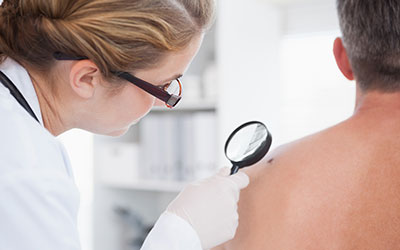The Rise in Skin Cancer in Young Adults
 Youth is not a shield against developing skin cancer. When people start tanning during adolescence, they are more likely to develop skin cancer as young adults or later in life. The problem with skin cancer and young adults is that they often underestimate the risks.
Youth is not a shield against developing skin cancer. When people start tanning during adolescence, they are more likely to develop skin cancer as young adults or later in life. The problem with skin cancer and young adults is that they often underestimate the risks.
Can Young Adults Get Skin Cancer?
Surveys by the American Academy of Dermatology (AAD) have found that more than 40 percent of adults are unaware that clothing will not necessarily protect them from the sun’s UV rays. Many don’t realize that tanning can cause skin cancer and that a base tan does not prevent sunburn. With skin cancer on the rise in young adults, more education on risks and preventative measures is necessary.
What Causes Skin Cancer in Young Adults?
Tanning and exposure to the sun are some of the most common causes of skin cancer in young adults. Some risk factors can make a person more prone to developing the condition. People with fair skin, red or blond hair, and blue or green eyes are more at risk. It’s important to note, however, that people with any skin color can develop skin cancer. A family history of skin cancer can put you more at risk. People with many freckles or moles are also at higher risk. Young women in the 25 to 29 age bracket are more at risk than young men.
How Common is Skin Cancer in Young Adults?
Melanoma is the most common skin cancer in young adults (people under 30). It is most prevalent in young adults between 25 and 29. It’s also the second-most common type of cancer in 15- to 19-year-olds. All types of skin cancers are currently increasing. Melanoma, basal and squamous cell carcinoma, and Merkel cell carcinoma rates are all expected to continue increasing over the next few years, according to the AAD.
Tanning and sunbathing became very popular in the 1970s, and skin cancer rates have been gradually increasing ever since. Melanoma rates decreased over ten years between 2006 and 2015. It’s believed that better efforts to educate on the risks of sun exposure and preventive measures contributed to this.
Treating Skin Cancer in Young Adults
There are surgical and non-surgical methods for treating skin cancer in young adults. Early detection and treatment will help ensure the best outcome. The treatment methods used will vary between individuals and are dependent on the type of skin cancer, the size of a lesion, and whether the cancer cells have spread to other parts of the body.
Most melanomas are treated with a surgical excision. It is also the most common way to remove other types of skin cancer. These are day procedures in which the patient stays awake. A local anesthetic is used to numb the area. In a standard excision, a skin cancer tumor and some surrounding healthy skin are removed. In sensitive areas, Mohs micrographic surgery can be used for non-melanoma skin cancers. During this procedure, the surgeon can employ precision techniques to minimize the amount of surrounding tissue that is removed. Mohs has the highest success rate in eliminating skin cancer, but other methods are also highly effective. For example, curettage and electrodessication is another type of technique that can be used for superficial skin cancers.
There are FDA-approved topical medications that can be applied to certain types of superficial skin cancers, either as a primary or secondary treatment in combination with something else. Some of these topical medications are a form of topical chemotherapy. Radiation is another non-surgical method that can be used to eradicate cancer.
How to Reduce the Risk of Skin Cancer in Your 20s and 30s
To significantly lower the chance of getting skin cancer in your 20s or 30s, preventive measures should start in childhood. Protecting your skin from the sun’s rays is one of the best ways to do this. Wear a broad-spectrum SPF 30+ sunblock if you are outdoors, and reapply it every two hours if you’re swimming or sweating. Tanning lamps and tanning beds can greatly increase the risk of skin cancer, so these should be avoided entirely. Wear sun-protective clothing if you’re going to be outdoors between 10 a.m. and 4 p.m. You can also wear clothing that has ultraviolet protection factor (UPF) built in.
Finally, do self-checks of your skin and get an annual skin cancer screening with your dermatologist. If any moles or freckles appear to change in size, shape or coloration, it could be an early warning sign of skin cancer.
Schedule a Skin Cancer Check at Schweiger Dermatology Group
Protect your skin now to reduce your risk of skin cancer later. At Schweiger Dermatology Group, we specialize in early detection and personalized treatment plans to help safeguard your health. Don’t wait until it’s too late — schedule your skin cancer screening today and take the first step toward protecting your skin for life. Early detection is key, and our expert dermatology providers are here to guide you. Contact us to book your appointment and stay ahead of skin cancer.
Originally posted 04/29/2021. Updated 10/14/2024.
